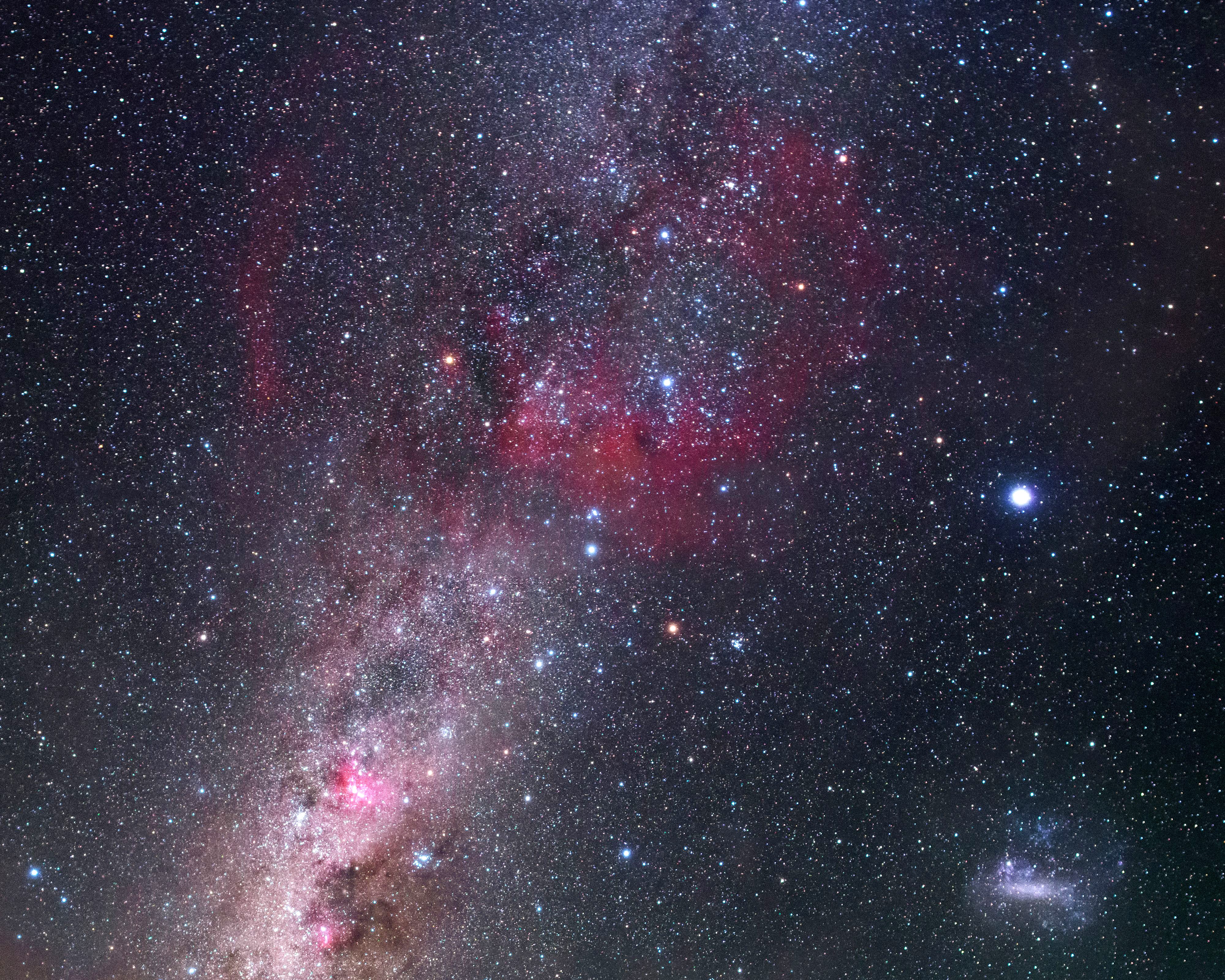
The Gum Nebula does not carry this name because it looks like celestial bubble gum. Instead, it was named after its discoverer, Colin S. Gum, an Australian astronomer who published a list of hydrogen clouds (called HII regions) in 1955. The Gum Nebula (12 in his catalog) is the largest emission nebula in the sky, spanning about 36° in the constellations Vela and Puppis. That’s the width of 72 Full Moons!
How could such a large object remain unknown until 1955? Its surface brightness is too faint for visual observation. Perhaps it was photographed by others, but Gum found it while creating a systematic catalog of southern HII regions, so his name stuck (if you will pardon the pun).
The Gum Nebula is estimated to be 1,000 light-years across, putting the nearest edge only 450 light-years from us and the farther edge some 1,500 light-years away. For comparison, the more familiar Orion Nebula (M42) is about 1,350 light-years distant and 24 light-years wide. In the sky, M42 appears roughly 1° across (the width of two Full Moons). Its greater density and surface brightness make it easy to see with the naked eye.
Gum 12 is a bit of an oddity. Astronomers speculate it is a million-year-old supernova remnant rather than an HII region. Yet it contains cometary globules — star-forming regions with tail-like features — found in many emission nebulae. It also contains the remnants of the Vela supernova, estimated to be just 11,000 years old.
One other curious piece of trivia about the Gum Nebula: It was photographed by the Apollo 16 astronauts using high-speed film, through the window of their capsule during the darkest part of their flight, while the Sun and Earth were both behind the Moon from their point of view.









